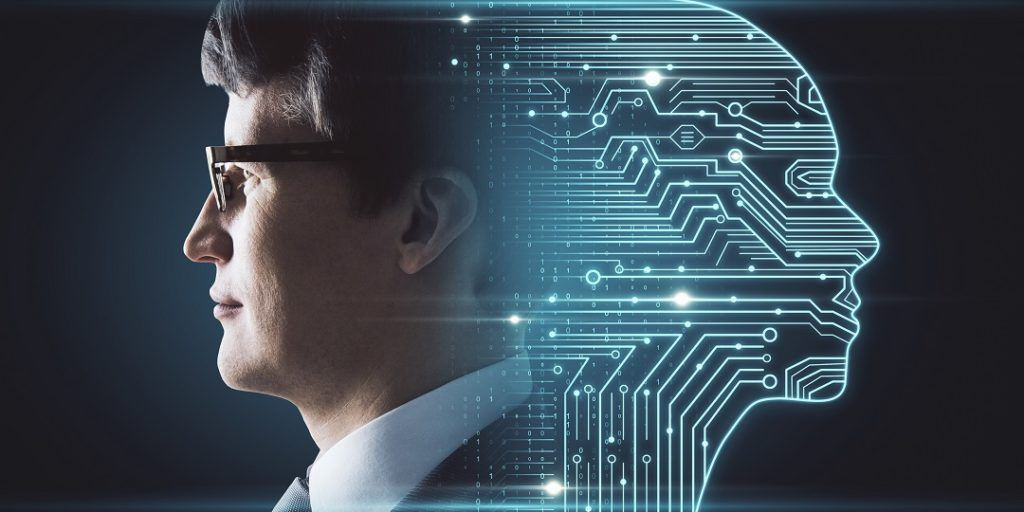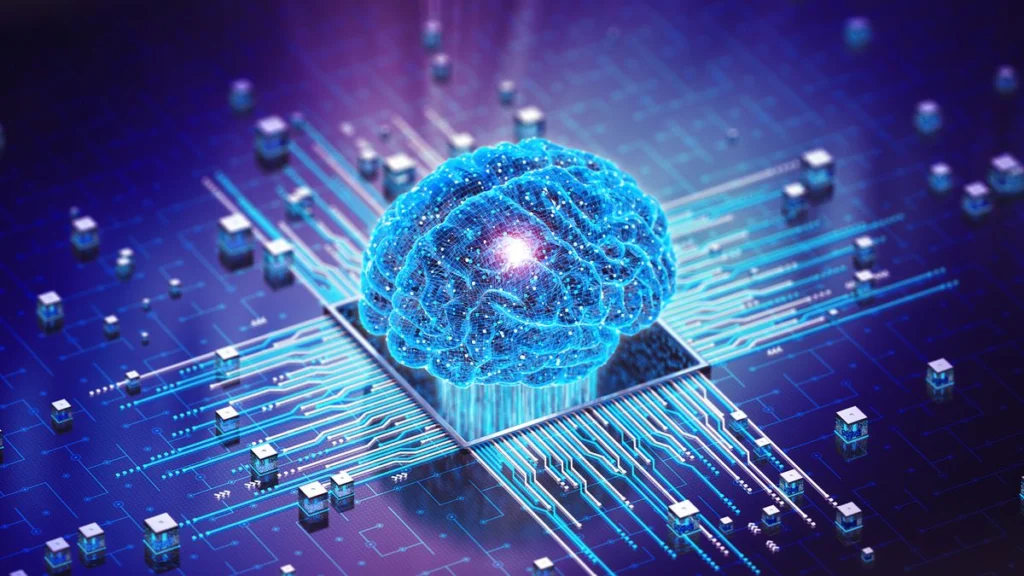What is Artificial Intelligence

What is Artificial Intelligence?
This comprehensive guide explains artificial intelligence (AI), its applications, benefits, and prospects. It also explores AI’s impact on various industries and everyday life.
Introduction:
Artificial intelligence (AI) has swiftly emerged as a transformative force, reshaping industries and enriching everyday life. Its expanding capabilities open up a world of new possibilities and challenges. In this comprehensive guide, we embark on a journey into the realm of AI, exploring its definition, types, workings, applications, benefits, challenges, and prospects.
What is Artificial Intelligence?
Artificial intelligence is the simulation of human intelligence in machines programmed to think and learn like humans. Coined by John McCarthy in 1956, AI has evolved from basic computing capabilities to advanced systems that can perform complex tasks such as language translation, medical diagnostics, and autonomous driving.
Types of Artificial Intelligence:
Narrow AI:
Narrow AI, or Weak AI, is designed to perform a specific task. Examples include virtual assistants like Siri and Alexa and recommendation algorithms used by Netflix and Amazon. These systems operate within a limited context and cannot generalize their abilities to other domains.
General AI
General AI, or Strong AI, aims to replicate human cognitive abilities. It can understand, learn, and apply knowledge across various tasks. While General AI remains theoretical, it represents the ultimate goal for AI researchers.
Super intelligent AI:
Super intelligent AI surpasses human intelligence across all fields. This level of AI, still hypothetical, raises significant ethical and existential questions about control and safety.
How Artificial Intelligence Works:
AI systems function through machine learning, neural networks, and algorithms. Machine learning involves training algorithms on large datasets to recognize patterns and make decisions. Inspired by the human brain, neural networks enable deep learning by processing data through interconnected layers.
Machine Learning:
Machine learning is the backbone of AI, allowing systems to improve their performance over time without explicit programming. It includes supervised, unsupervised, and reinforcement learning.
Neural Networks:
Neural networks simulate the human brain’s structure, processing data through layers of nodes. Deep learning, a subset of neural networks, has achieved image and speech recognition breakthroughs.
Algorithms:
Algorithms are step-by-step procedures for calculations. In AI, algorithms range from simple decision trees to complex models like convolutional neural networks used in image processing.
Applications of Artificial Intelligence:
AI’s versatility is evident in its wide range of applications across various sectors:
AI in Healthcare:
AI enhances healthcare through improved diagnostics, personalized treatment plans, and administrative efficiency. Machine learning models analyze medical images, predict disease outbreaks, and assist in drug discovery.
AI in Finance:
In finance, AI algorithms detect fraudulent activities, optimize trading strategies, and provide personalized financial advice. Robo-advisors and AI-driven customer service improve accessibility and efficiency.
AI in Education:
AI personalizes education by adapting learning materials to individual needs, automating administrative tasks, and providing real-time feedback. Educational platforms leverage AI to enhance the learning experience.
AI in Entertainment:
From content recommendations on streaming platforms to advanced game design, AI personalizes entertainment. It creates immersive experiences through realistic graphics, adaptive gameplay, and virtual reality.

Benefits of Artificial Intelligence:
AI offers numerous benefits, including:
- Efficiency: Automating repetitive tasks increases productivity.
- Accuracy: AI reduces human error in tasks like data analysis and decision-making.
- Data Analysis: AI processes large datasets to uncover insights and trends.
Challenges and Risks of AI:
Despite its advantages, AI presents several challenges and risks:
- Ethical Concerns: Issues like algorithm bias and lack of transparency need addressing.
- Job Displacement: Automation may lead to job loss in specific sectors.
- Security: AI systems can be vulnerable to hacking and misuse.
Ethical Considerations in AI:
Ensuring AI’s ethical development involves:
- Bias: Eliminating biases in AI models to promote fairness.
- Transparency: Making AI decision-making processes understandable.
- Accountability: Establishing clear accountability for AI-driven decisions.
Future of Artificial Intelligence:
The future of AI holds exciting possibilities, including:
- Emerging Trends: Innovations in quantum computing, edge AI, and AI-powered robotics.
- Potential Developments: Advances in human-AI collaboration, emotion recognition, and autonomous systems.

AI and Society:
AI impacts society in various ways:
- Daily Life: From intelligent assistants to autonomous vehicles, AI is becoming integral to daily routines.
- Societal Changes: AI-driven automation may reshape industries and economies.
AI and Employment:
AI influences the job market by:
- Job Creation: New roles in AI development, maintenance, and regulation.
- Job Loss: Automation of routine tasks may displace specific jobs.
- Skill Requirements: Increased demand for AI-related skills and continuous learning.
AI in Autonomous Systems
AI powers autonomous systems like:
- Self-Driving Cars: AI enables vehicles to navigate and operate independently.
- Drones: Autonomous drones perform tasks ranging from delivery to surveillance.
- Robotics: AI-driven robots assist in manufacturing, healthcare, and service industries.
AI in Smart Homes:
Smart home technology leverages AI for:
- Home Automation: AI controls lighting, climate, and security systems.
- Intelligent Assistants: Voice-activated assistants manage tasks and provide information.
AI in Cybersecurity:
AI enhances cybersecurity by:
- Threat Detection: Identifying and mitigating cyber threats.
- Response Automation: Automating incident response to reduce reaction time.
AI and Big Data:
AI processes and analyzes big data to:
- Data Processing: Efficiently handle vast amounts of data.
- Insights Extraction: Derive actionable insights from complex datasets.
AI Regulations and Policies:
Governments and organizations are developing regulations to:
- Initiatives: Promote ethical AI development.
- Global Standards: Establish international AI standards and practices.

Conclusion:
Artificial intelligence is revolutionizing how we live and work, offering immense benefits and posing significant challenges. Understanding AI’s capabilities, applications, and implications is not just crucial, but empowering as we navigate this technological frontier. By addressing ethical concerns and promoting responsible development, we can harness AI’s potential to create a better future for all.
Frequently Asked Questions:
What is the difference between narrow AI and general AI?
Narrow AI is designed for specific tasks, while general AI has broader cognitive abilities like human intelligence.
How does machine learning contribute to AI?
Machine learning enables AI systems to learn from data and improve over time without explicit programming.
What are some ethical concerns associated with AI?
- Bias in AI algorithms.
- Transparency in AI decision-making.
- Accountability for AI-driven actions.
Can AI replace human jobs?
AI can automate routine tasks, potentially displacing some jobs, but it also creates new roles in AI development and maintenance.
What are the benefits of AI in healthcare?
AI improves diagnostics, personalizes treatment plans, and enhances administrative efficiency in healthcare.
How is AI regulated?
AI is regulated through government initiatives and global standards to ensure ethical development and usage.




